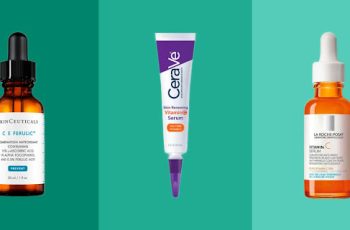
How to Add a Salicylic Acid Serum to Your Skincare Routine (Without Irritating Your Skin)
Let’s be honest: figuring out the right skincare routine can sometimes feel like solving a complex puzzle. With so many products, textures, and active ingredients available—from oils and serums to acids and toners—it’s easy to get overwhelmed. Where does what go? What works with what? And when should you apply what?
If you’ve been eyeing salicylic acid as your next skincare savior but aren’t sure how to properly incorporate it into your routine, don’t worry—you’re not alone. Today, we’re walking you through everything you need to know about salicylic acid, from what it is and how it works to how to use it without drying out your skin or causing irritation.
What Is Salicylic Acid and Why Should You Use It?
Salicylic acid is a type of beta hydroxy acid (BHA)—and it’s actually the most common and well-researched one out there. Derived from willow bark, this oil-soluble acid is celebrated for its ability to penetrate deep into pores, dissolving dirt, excess oil, dead skin cells, and other acne-causing impurities.
What makes it especially powerful is that, unlike alpha hydroxy acids (AHAs), salicylic acid can travel into your pores due to its oil-solubility. This means it’s particularly effective for:
Blemish-prone skin
Clogged pores and blackheads
Oily T-zones
Occasional breakouts or acne-prone areas
Plus, it has anti-inflammatory and antibacterial properties, which make it a go-to for people dealing with acne, hormonal flare-ups, and even congested skin from pollution or wearing masks.
How Does Salicylic Acid Work in Your Routine?
Salicylic acid can be found in a variety of skincare formats, each serving a slightly different purpose and offering different intensities. How you incorporate it into your routine depends not only on the format of the product (cleanser, serum, spot treatment, peel) but also on your skin type and tolerance.
Here’s a breakdown of common types of salicylic acid products and how they fit into your daily regimen:
1. Salicylic Acid Cleanser (AM/PM Use)
Best for: Daily maintenance and mild breakouts
Cleansers with salicylic acid are a great way to start incorporating this active into your routine, especially if you’re a beginner. These are considered “rinse-off” formulas, meaning the acid doesn’t sit on your skin for long—reducing the likelihood of irritation while still providing the exfoliating and pore-clearing benefits.
🧴 How to use:
Use in the morning and/or evening.
Apply a dime-sized amount to damp skin, massage for 30–60 seconds, then rinse.
Follow with a hydrating toner or serum to maintain moisture balance.
💡 Pro Tip: Even if a salicylic cleanser contains 2% BHA (the maximum OTC strength), it’s unlikely to cause over-drying because it doesn’t remain on the skin for an extended time.
2. Salicylic Acid Serum (Primarily PM Use)
Best for: Targeted exfoliation, active breakouts, and oily skin
Serums are leave-on treatments, meaning the active ingredients are absorbed more deeply and stay on the skin longer. A salicylic acid serum is more potent than a cleanser, making it ideal for treating breakouts, uneven skin texture, and clogged pores.
🧴 How to use:
Apply after cleansing and toning, before moisturizer.
Use at night 2–3 times a week to start. Increase usage gradually if your skin tolerates it well.
Use only a few drops—more is not better with acids!
💡 Important: Salicylic acid can be drying, especially for sensitive or dry skin types. Always follow with a hydrating moisturizer and use a broad-spectrum sunscreen in the morning, as BHAs increase sun sensitivity.
3. Spot Treatments with Salicylic Acid
Best for: Targeting individual blemishes and pimples
These are typically highly concentrated (up to 2% salicylic acid or higher in prescription products) and meant to be applied directly to blemishes. They’re effective for shrinking pimples quickly but can lead to dryness or flaking if overused.
🧴 How to use:
Apply a small amount to clean skin only on the affected area.
Let it absorb before layering any other products.
Use once daily (preferably at night), or as needed.
💡 Pro Tip: Layer a hyaluronic acid or ceramide-rich moisturizer afterward to counteract any dryness or irritation.
4. Salicylic Acid Peels (Professional Use Only)
Best for: Cystic acne, acne scars, severe congestion
These are high-strength exfoliating treatments often used in clinical or dermatological settings. A salicylic acid peel helps dramatically speed up cell turnover, unclog pores, and reduce acne scarring—but it’s not for home use unless guided by a professional.
🧴 How to use:
Leave it to the professionals! A dermatologist will assess your skin and perform the treatment.
Post-peel care includes lots of hydration, sun protection, and avoiding other active ingredients for several days.
When and Where to Use Salicylic Acid in Your Routine
The general rule of thumb when layering skincare products is: apply from thinnest to thickest consistency. Here’s how that translates into a typical skincare routine with salicylic acid included.
Morning Routine (if using a salicylic cleanser)
Cleanser: Gentle salicylic acid face wash
Toner: Hydrating or balancing toner (avoid acid-based ones to prevent over-exfoliation)
Serum: Vitamin C or hydrating serum
Moisturizer: Lightweight, non-comedogenic
Sunscreen: SPF 30 or higher (non-negotiable!)
Evening Routine (if using a salicylic acid serum)
Cleanser: Gentle or creamy cleanser (no need for salicylic again)
Toner: Optional, depending on your skin needs
Serum: Salicylic acid serum (2–3 nights/week)
Moisturizer: Richer or more restorative moisturizer
Optional spot treatment: Apply after serum but before moisturizer, directly on blemishes
Tips for Safely Using Salicylic Acid
✔️ Start slow – Even if your skin isn’t typically sensitive, overusing salicylic acid can compromise your moisture barrier and cause flaking, redness, or breakouts.
✔️ Patch test – Always test new products on a small area of skin before applying to your entire face.
✔️ Don’t mix with certain actives – Avoid layering salicylic acid with other strong exfoliants like glycolic acid, lactic acid, or retinol unless advised by a dermatologist.
✔️ Stay hydrated – Pair your salicylic acid treatment with a good hydrating product like hyaluronic acid or niacinamide to balance your skin.
✔️ Always wear sunscreen – BHAs make your skin more susceptible to sun damage. Even on cloudy days, SPF is essential.
Can You Use Salicylic Acid Every Day?
Yes—and no. It depends on the form you’re using and your skin’s sensitivity.
A salicylic acid cleanser can generally be used daily, even twice a day for oily or acne-prone skin.
A serum or spot treatment should be used more cautiously—start with 2–3 times per week.
Overuse can lead to peeling, redness, and dryness, which is why gradual introduction is key.
Final Thoughts: Making Salicylic Acid Work for You
Adding a salicylic acid serum to your skincare routine doesn’t have to be intimidating. When used properly, this powerful BHA can help transform congested, breakout-prone skin into a clearer, smoother, more radiant complexion.
The key is to understand your skin, choose the right product format, and follow a routine that prioritizes hydration and balance. Whether you’re just starting out with a salicylic cleanser or introducing a serum for more targeted results, consistency and proper layering are what really make a difference.
If you’re still unsure about which salicylic acid product is right for you, consult with a dermatologist or esthetician—they can help you find a customized approach based on your skin’s unique needs.


